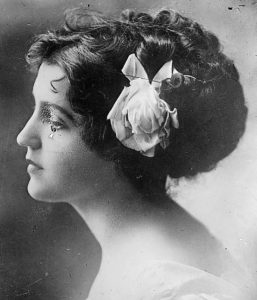People
Notable People
Eleanor Painter Strong - Opera and Operetta Star
10494 Lake Shore Boulevard
Eleanor Painter’s rise to fame in light opera and subsequently in grand opera was meteoric. In addition to music, she found artistic expression in writing, linguistics, and tapestry weaving. Her warm and glowing personality made her friends in artistic as well in social circles.
Eleanor “Nellie” Painter was born on September 12, 1891, in Walkerville, Iowa. She started to sing as a child and was sent to Colorado “to grow up.” Ambitious to become a singer, she later went to New York, where she sang in churches. At age twenty-one, she went to Berlin to study singing, accompanied by her mother.
She sang at Covent Garden in London. Pretty and ambitious, she rose rapidly in public favor and, in 1913, was given a five-year contract with the Charlottenburg Opera in Berlin. She was released from that contract with the Charlottenburg Opera due to the outbreak of World War I.
In July 1913, her “discoverer,” Andreas Dippel, heard her sing in “Mignon” in Berlin. On the same night, he engaged her to sing in an operetta, “The Lilac Domino,” to be produced in New York the following year. She was a hit with her voice, gowns, and prettiness in “The Lilac Domino,” With 109 performances, she was hailed by a newspaper as the “new American prima donna found by chance.”

Eleanor married an English actor and baritone singer named Wilfred Douthitt, who performed with her in “The Lilac Domino." Wilfred took on the persona of a new singer called Louis Graveure.
Victor Herbert’s creation, “Princess Pat,” was written for Eleanor Painter. She sang in that role for two years.
Between 1917 and 1924, she starred in a series of plays with music, operettas, and operas, mostly in New York. Among them were “Art and Opportunity,” a straight play; “Glorianna,” a play with music by Friml: revivals by the Schuberts of “The Climax” and “Floradora;” “The Last Waltz,” by Oscar Strauss; “The Exile,” a drama of the French Revolution; and “The Chiffon Girl,” an operetta.
In 1923, she sang “Madame Butterfly” in the Staats Opera in Berlin by invitation. This led in 1925 to a prolonged guest tour in Germany in “Faust,” “La Boheme,” and “Carmen,”
Back in New York in 1927, Eleanor appeared in “The Nightingale,” playing the part of Jenny Lind. In the ensuing two years, she sang in operas in Europe and San Francisco.
Eleanor and Wilfred divorced in 1930 after being married for fourteen years.
In 1931, Eleanor Painter bade farewell to the footlights to marry Major Charles Strong and settle in Bratenahl. Her marriage did not lessen her strong interest in music and the theater. Eleanor quickly assumed a role in Cleveland’s social and cultural circles, and she identified with many social and artistic events of civic import.
Mrs. Strong immediately became active in the Musical Arts Association and on the women’s committee of the Cleveland Orchestra. She rarely missed a musical attraction and showed more than a spectator’s interest.
In March 1934, she took the leading role in two special performances by the Cleveland Orchestra of Wolf-Ferrari’s “Secret of Suzanne.” Late in 1935, she interpreted Bizet’s “Carmen,” one of her most popular roles. She presented a musical tale, “Peter and the Wolf,” in conjunction with the Cleveland Orchestra program in November 1941.
With an urge to express herself musically and no longer finding an outlet through singing, Eleanor began writing about music. In January 1941, she debuted as the author of “Spring Symphony,” a novel dealing with Robert Schumann and Clara Wiek's romance. She described it as “fiction based on fact.” She spent countless hours at the Cleveland Public Library gathering material for her book.
In the years following her retirement from professional life, she was known to say, “I like musicians even better than when I was one of them.”
At the age of 56, Eleanor died at her 10494 Lake Shore Boulevard home on November 3, 1947, after a four-month illness. She was buried in Highland Park Cemetery in Highland Hills, Ohio.
